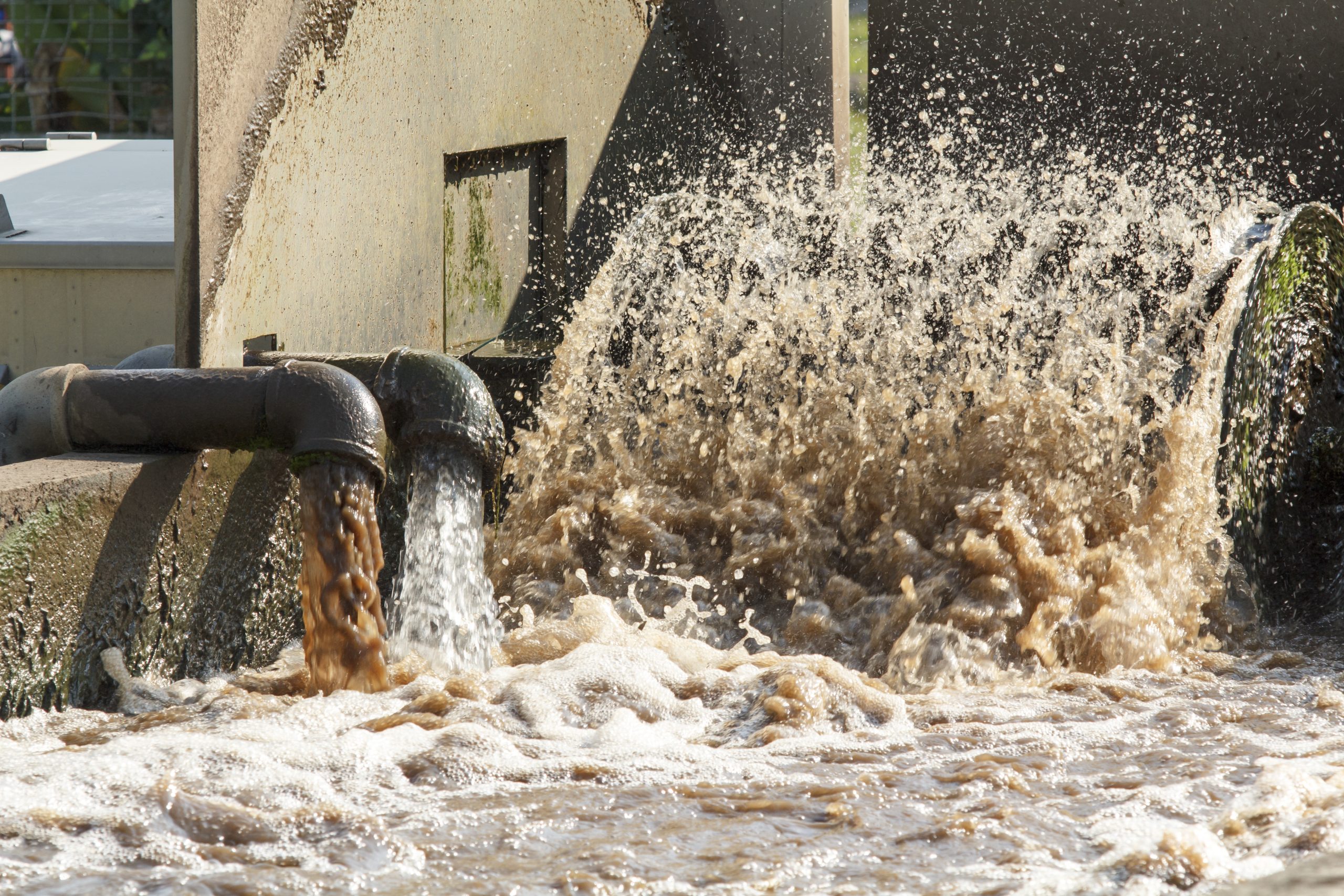Key Methods in Hazardous Waste Water Treatment Processes
The therapy of industrial wastewater is an essential aspect of environmental administration, involving a variety of methods designed to reduce the effect of pollutants. Innovations in modern technologies such as membrane filtering and advanced oxidation processes offer ingenious remedies for boosting therapy efficiency.
Physical Treatment Approaches
Just how properly can physical therapy approaches deal with the intricacies of commercial wastewater? Physical therapy techniques play an essential role in the preliminary stages of wastewater management, focusing largely on the removal of solids and large particulates. Techniques such as flotation protection, filtering, and sedimentation are necessary for lowering the concentration of put on hold solids, therefore improving the effectiveness of subsequent treatment processes.
Sedimentation includes the gravitational settling of solids, allowing for the splitting up of much heavier products from the wastewater. This technique is particularly reliable in clearing up water prior to chemical or organic treatments.
Additionally, flotation protection methods, which make use of air bubbles to lift suspended solids to the surface area for removal, work in treating wastewater with high focus of fats, oils, and greases. Generally, physical treatment approaches work as a vital very first step in the detailed monitoring of industrial wastewater, making certain that the tons on succeeding treatment stages is lessened and improving total treatment effectiveness.
Chemical Therapy Strategies
While physical therapy techniques prepared for reliable wastewater management, chemical treatment strategies are necessary for dealing with the more complicated pollutants often located in industrial effluents. These techniques make use of different chemical agents to precipitate, neutralize, or oxidize unsafe compounds, making certain a much more thorough elimination of toxins.
One usual technique is coagulation and flocculation, where chemical coagulants such as aluminum sulfate or ferric chloride are contributed to advertise the aggregation of put on hold particles. This procedure boosts solid-liquid separation, minimizing turbidity and enhancing water quality. Furthermore, neutralization procedures are employed to change the pH of wastewater, utilizing bases or acids to neutralize acidic or alkaline streams, respectively.
Oxidation-reduction reactions play a crucial function in derogatory organic pollutants and microorganisms. Chemical oxidants like hydrogen, chlorine, or ozone peroxide are utilized to break down complicated natural compounds, making them much less unsafe or more naturally degradable. In addition, advanced oxidation procedures (AOPs) incorporate numerous oxidation techniques to enhance contaminant elimination efficiency.
Organic Therapy Procedures
The efficiency of wastewater therapy is dramatically improved by organic therapy procedures, which harness the all-natural metabolic activities of microorganisms to disintegrate natural issue and eliminate contaminants. Industrial Waste Water Treatment. These processes mostly entail cardiovascular and anaerobic digestion, each tailored for certain kinds of wastewater
Cardio therapy procedures utilize oxygen to support microbial development, advertising the break down of natural toxins right into co2 and water. Typical methods consist of turned on sludge systems, where aeration containers facilitate the mixing of wastewater with bacteria, and dripping filters, which urge biofilm development on media surface areas.
Alternatively, anaerobic treatment processes take place in the absence of oxygen, making use of anaerobic germs to decompose raw material, causing biogas production, a renewable power source. Anaerobic digesters are typically utilized in industrial setups for this purpose, properly lowering the anonymous quantity of sludge while producing valuable biogas.
The choice of a biological therapy technique depends on wastewater features, treatment objectives, and regulative standards. The assimilation of biological procedures in wastewater treatment not only improves pollutant elimination efficiency however also advertises sustainability by lessening chemical use and supporting source recovery.
Advanced Oxidation Processes

Usual AOP techniques consist of Fenton's ozonation, photocatalysis, and reagent. Fenton's reagent, a combination of hydrogen peroxide and ferrous iron, militarizes the development of hydroxyl radicals, making it effective for treating Click This Link wastewater consisting of phenolic compounds and other recalcitrant compounds.
AOPs supply several advantages, including lowered sludge manufacturing and the ability to treat wastewater with high focus of organic pollutants. The implementation of AOPs requires careful consideration of operational specifications and cost-effectiveness, making sure that these innovative strategies are suitably integrated into existing wastewater treatment systems.
Membrane Layer Filtration Technologies

Microfiltration works for removing suspended solids and germs, while ultrafiltration targets smaller sized natural molecules and viruses. Nanofiltration connects the space in between ultrafiltration and reverse osmosis, efficiently eliminating divalent ions and natural substances. Reverse osmosis supplies the highest possible degree of filtration, made use of mainly for desalination and getting rid of mono-valent ions.
Membrane layer technologies offer various advantages, consisting of reduced power usage contrasted to typical treatment techniques, modular style for scalability, and the capacity for water healing and reuse. Nevertheless, difficulties such as membrane layer fouling and the requirement for routine maintenance should be addressed to ensure system effectiveness. On the whole, membrane layer filtering innovations stand for an essential part of modern industrial wastewater therapy methods, promoting sustainability and resource preservation in water administration.
Final Thought
In conclusion, industrial wastewater therapy utilizes a diverse array of strategies, including physical, chemical, biological, and advanced approaches. Each strategy plays a crucial role in efficiently addressing numerous pollutants, enhancing water top quality, and advertising resource sustainability. The integration of these techniques fosters a comprehensive therapy method, guaranteeing that industrial effluents satisfy regulatory criteria while lessening environmental influence. Continued improvements in these techniques will further enhance the performance and efficiency of wastewater therapy procedures in industrial setups.
The therapy of commercial wastewater is a vital facet of environmental management, including an array of methods made to reduce the effect of impurities.Just how efficiently can physical treatment methods attend to the complexities of commercial wastewater?Advanced oxidation procedures (AOPs) stand for an advanced approach in commercial wastewater therapy, designed to effectively break down natural toxins that are often resistant to traditional treatment methods (Industrial Waste Water Treatment).In conclusion, industrial wastewater treatment employs a varied array of techniques, including physical, chemical, biological, and progressed approaches. Proceeded developments in these approaches will even more enhance the efficiency and performance of wastewater therapy procedures in commercial setups